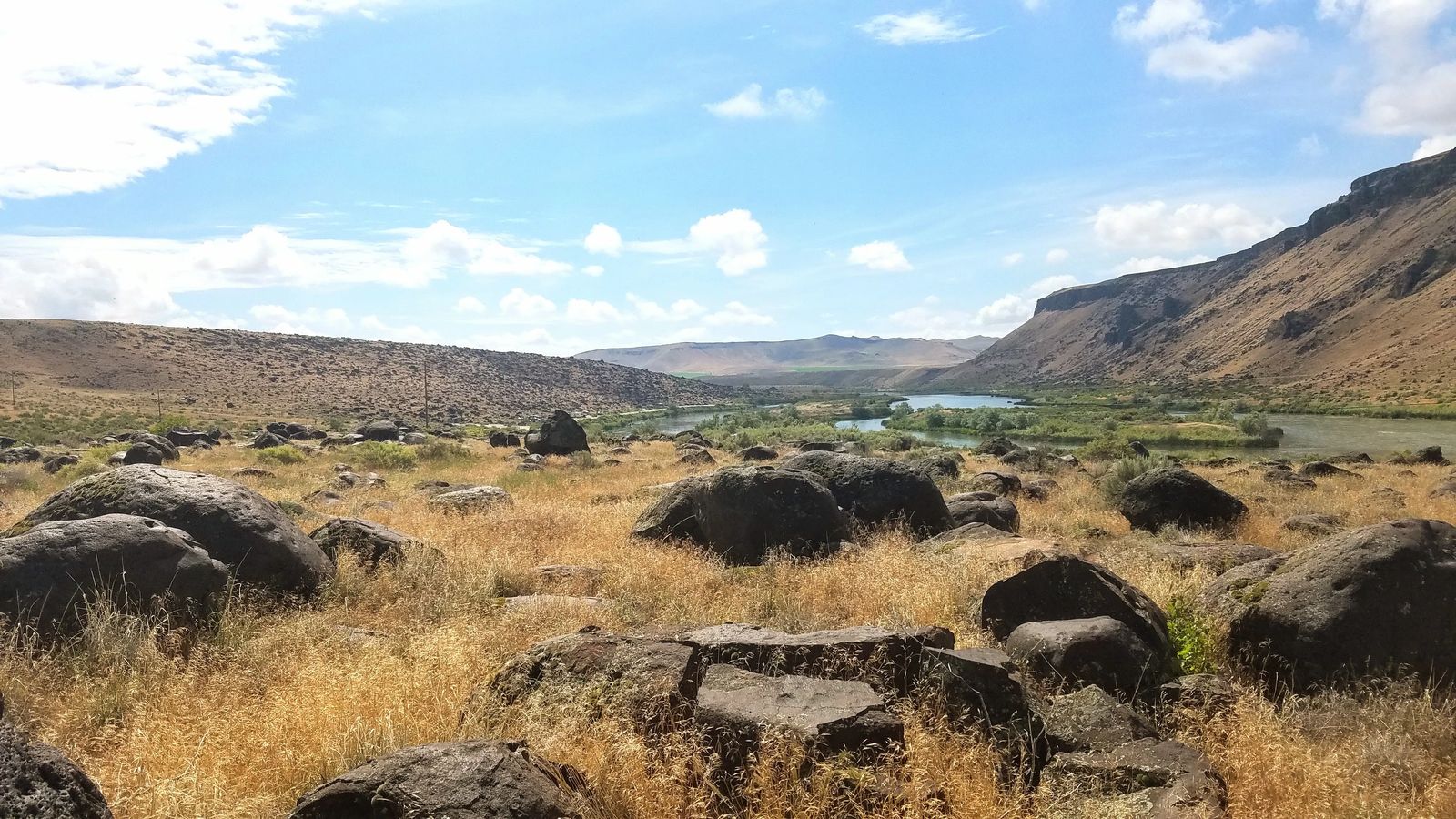
Weekly Gem #293, What's the difference between a watermelon and a sweet pea?
Published 9/9/23
Location: This weekly gem is located in Celebration Park, Idaho (see the Clue Me! Map). There’s nothing like a nice, cold, juicy watermelon on a hot day. And these are nothing like a cold, juicy watermelon.
Lake Bonneville was an ancient lake filling a huge closed basin covering most of western Utah, and nudging into Idaho and Nevada. It covered an area about the size of Lake Michigan, and was about 900 feet deep.
The weak link was a leaking natural dam, at Red Rock Pass, Idaho. About 15,000 years ago it ruptured, 360 feet of elevation blown away in a few minutes, releasing nearly 1,000 cubic miles of water from Lake Bonneville in just a few weeks. If you were observing from the hillside above this event, you would have seen a river a quarter mile wide and 350 feet deep, roaring toward Pocatello at 60 feet per second. In round numbers, that’s 246,857,160 gallons of water per second! This flood of water engulfed the Snake River, shredded across southern Idaho, and poured into the Columbia River before emptying into the Pacific Ocean.
Now, back to those melons…
The bedrock in southern Idaho has a lot of columnar basalt (six sided columns of cooled lava). The deluge ripped millions of massive basalt boulders from the Snake River canyons, tumbled them, and spit them out along the way. Several million of these rocks, many as large and round as a Volkswagen Beetle, were discarded in the vicinity of Celebration Park. This gives the appearance of a vast field of melons, which lead to the geological term for these boulders, “melon gravel.”
About 20 minutes.
The map of Lake Bonneville is from Rachel’s SLC History blog, https://www.slchistory.org/.../more-about-lake-bonneville...
.........
Here's the hidden gem entry from our Clue Me! map.
Clue
What’s the difference between a watermelon and a sweet pea?
Description
Celebration Park, and it's "watermelons."
Why It's Interesting
These rounded basalt rocks and boulders were tumbled in the outflow of Lake Bonneville. They were pounded against each other, sharp corners smoothed out, and then dropped here to make a big "watermelon patch." It's pretty amazing that these big boulders could have been rolled along mile after mile. Water is powerful.















